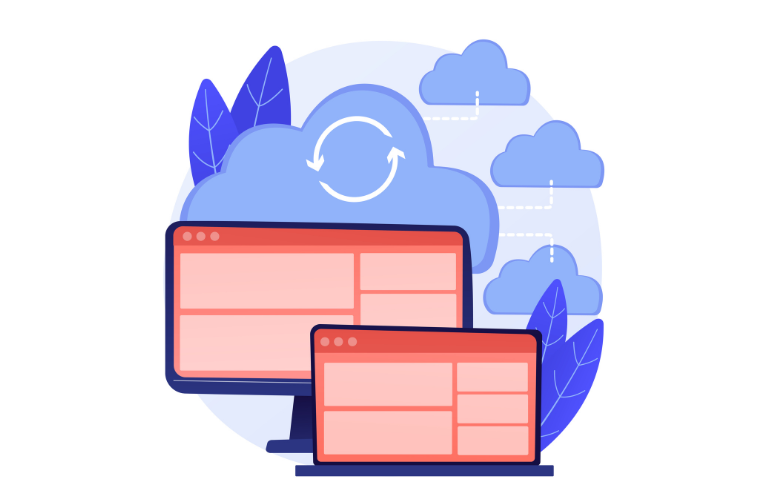In 2025, developers choosing between Open Source vs Hosted LLMs face a pivotal decision that affects cost, privacy, performance, and scalability. Open-source LLMs, like Llama 2 and Mistral, are typically self-hosted, offering control and customization. Hosted LLM APIs, such as OpenAI’s ChatGPT or Google’s Gemini, provide ease and speed.
This article compares the two, highlighting pros, cons, and practical use cases to help you decide. We’ll also share implementation tips and shortcuts to address pain points like slow performance or high costs.
Table of Contents
Why Compare Open Source vs Hosted LLMs?
Large Language Models (LLMs) drive AI applications, from chatbots to data analysis. Open-source LLMs are freely available models you host yourself, while hosted LLM APIs are proprietary services accessed via the cloud. The choice impacts your project’s privacy, budget, and deployment speed. By understanding Open Source vs Hosted LLMs, developers can align their choice with specific needs, such as compliance or rapid prototyping.
What Are Open-Source LLMs?
Open-source LLMs, like Llama 2 (7B, 13B, 70B) or Mistral, are pre-trained models available for free. You download and host them on your infrastructure, enabling full control over data and customization. The open-source community, including platforms like Hugging Face, provides pre-trained models and tools to simplify deployment.
What Are Hosted LLM APIs?
Hosted LLM APIs, like OpenAI’s GPT-4 or Anthropic’s Claude, are cloud-based services. You access them via API calls, paying per token or subscription. They’re designed for quick integration and scalability, with providers handling maintenance and updates. However, they process data on external servers, which may raise privacy concerns.
Pros of Open-Source LLMs
Open-source LLMs excel in scenarios requiring privacy and flexibility. Here’s why developers choose them:
- Data Privacy: Host on-premises or private clouds to keep sensitive data secure, ideal for industries like healthcare or finance.
- Cost Savings: No per-token fees after initial setup. A 7B Llama 2 model on Codesphere costs $80/month, versus $10,800/month for GPT-4 at 10,000 daily queries.
- Customization: Fine-tune models for niche tasks, like legal text analysis, often matching GPT-4’s performance in specific domains.
- Control: Manage updates to avoid unexpected changes breaking your application.
Cons of Open-Source LLMs
Open-source LLMs have challenges:
- Complex Setup: Requires expertise in GPU provisioning and cluster management.
- Upfront Costs: Hardware, like Nvidia A10G GPUs, can be costly ($1.30/hour on Hugging Face).
- Maintenance Burden: You handle updates, patches, and scaling, demanding time and resources.
- Performance Dependency: Latency depends on your hardware, unlike optimized API servers.
Pros of Hosted LLM APIs
Hosted LLM APIs are favored for their simplicity and reliability:
- Rapid Deployment: Integrate in minutes using SDKs, perfect for MVPs or startups.
- Low Maintenance: Providers manage servers, updates, and scaling, freeing your team.
- Optimized Performance: High-performance servers ensure low latency, even under heavy loads.
- Feature Updates: Access cutting-edge features, like GPT-4’s reasoning modules, without effort.
Cons of Hosted LLM APIs
Hosted APIs have drawbacks:
- High Costs at Scale: 10,000 daily queries on GPT-4 (8K context) cost $360/day ($10,800/month).
- Privacy Risks: Data processed on third-party servers may not comply with strict regulations like GDPR.
- Limited Customization: Prompt engineering is less flexible and more expensive than fine-tuning.
- Dependency Risks: Outages, like ChatGPT’s DDoS attacks, can disrupt service.
Cost Comparison: Open Source vs Hosted LLMs
Cost is a key factor in choosing Open Source vs Hosted LLMs. Here’s a comparison for generating 500 responses using the Alpaca dataset:
| Model | Cost | Runtime | Hardware |
| GPT-4 | $3.21 | 3m40s | N/A |
| GPT-3.5-turbo | $0.12 | 6m | N/A |
| Llama 2 13B (Hugging Face) | $0.12 | 5m30s | 1x Nvidia A10G @ $1.30/hour |
| Vicuna 7B (Hugging Face) | $0.07 | 3m20s | 1x Nvidia A10G @ $1.30/hour |
Open-source models like Vicuna 7B are 50% cheaper than GPT-3.5 at full capacity. A 13B Llama 2 model is nine times less costly than GPT-4-turbo, making Open Source vs Hosted LLMs more economical for high-volume use.
Performance and Latency: Which Is Faster?
Latency impacts user experience. Hosted APIs leverage optimized servers for 3–4 second response times but risk outages. Open-source LLMs depend on your hardware. Tools like Deci.ai’s AutoNAC can accelerate inference 3–10x, making a self-hosted Llama 2 on an Nvidia A10G competitive (5–6 seconds).
Use Case 1: Privacy-First Chatbot for Healthcare
A healthcare provider needs a HIPAA-compliant chatbot for patient queries.
- Best Choice: Open-source LLM (Llama 2 13B).
- Why: Self-hosting ensures data privacy, and fine-tuning boosts medical accuracy.
Implementation:
from transformers import AutoModelForCausalLM, AutoTokenizer
model = AutoModelForCausalLM.from_pretrained("meta-llama/Llama-2-13b")
tokenizer = AutoTokenizer.from_pretrained("meta-llama/Llama-2-13b")- Shortcut: Use Codesphere’s one-click setup (1m38s) to deploy, saving hours.
- Outcome: 90%+ ChatGPT accuracy at $80/month vs. $1,500/month for GPT-3.
Open-source LLMs win for privacy and cost.
Use Case 2: Rapid MVP for a Startup
A startup needs a customer support chatbot with minimal setup.
- Best Choice: Hosted LLM API (GPT-4).
- Why: Quick integration and no infrastructure needed.
Implementation:
import openai
openai.api_key = "your-api-key"
response = openai.Completion.create(model="gpt-4", prompt="Answer customer query")- Shortcut: Use OpenAI’s guardrails to filter harmful content, saving development time.
- Outcome: Live chatbot in hours, but costs $3.21 for 500 queries.
Hosted APIs excel for speed but scale poorly on cost.
Time-Saving Shortcuts for Open-Source LLMs
To simplify self-hosting and address slow performance:
- Pre-Trained Models: Download from Hugging Face’s model hub (e.g., Vicuna 7B).
- GPU Autoscaling: Use Qualcomm Cloud to adjust resources dynamically.
- Prompt Shrinking: Write concise prompts to reduce latency and costs.
- Mosaic ML: Streamline training and deployment, cutting setup time by 30%.
These make Open Source vs Hosted LLMs more accessible.
Hybrid Approach: Combining Both
Some developers use a hybrid model: hosted APIs for non-sensitive tasks (e.g., casual chat) and open-source LLMs for secure data processing. This balances cost, privacy, and speed.
Which Is Better: Open Source or Hosted LLMs?
The choice depends on your priorities:
- Choose Open-Source LLMs for:
- Strict privacy needs (e.g., healthcare, finance).
- High-volume use with cost savings.
- Niche tasks requiring fine-tuning.
- Choose Hosted LLM APIs for:
- Rapid prototyping or MVPs.
- Limited technical resources.
- Access to cutting-edge features without maintenance.
Evaluate your budget, compliance requirements, and team expertise. For example, a 70B Llama 2 model rivals GPT-4 in specific tasks but requires significant hardware, while GPT-4’s API is plug-and-play but costly at scale.
Conclusion
In 2025, Open Source vs Hosted LLMs presents a clear trade-off. Open-source LLMs, like Llama 2, offer privacy, customization, and long-term savings but demand setup effort. Hosted APIs, like GPT-4, provide speed and simplicity but falter on cost and privacy. Use tools like Codesphere or Hugging Face to streamline self-hosting, or leverage APIs for quick wins. For more insights, explore Hugging Face’s model hub, xAI’s API services, or compare models on Artificial Analysis.
FAQs on Open Source vs Hosted LLMs
1. What is the difference between Open Source and Hosted LLMs?
Open Source LLMs, like Llama 2 or Mistral, are free models you download and host on your own servers, offering full control and customization. Hosted LLMs, such as OpenAI’s GPT-4 or Google’s Gemini, are cloud-based APIs you access via subscription or per-token fees, designed for quick integration but with less control over data privacy.
2. Which is cheaper: Open Source vs Hosted LLMs?
Open Source LLMs have higher upfront costs for hardware (e.g., $1.30/hour for an Nvidia A10G) but save money at scale. For example, a 7B Vicuna model costs $0.07 for 500 queries, while GPT-4 costs $3.21. Hosted LLMs are cheaper initially but expensive for high-volume use, like $10,800/month for 10,000 daily GPT-4 queries.
3. Are Open Source LLMs secure for sensitive data?
Yes, Open Source LLMs are more secure for sensitive data because you host them on-premises or in private clouds, ensuring compliance with regulations like HIPAA or GDPR. Hosted LLMs process data on third-party servers, which may raise privacy concerns for industries like healthcare or finance.
4. How fast are Open Source vs Hosted LLMs?
Hosted LLMs, like GPT-4, typically offer lower latency (3–4 seconds per query) due to optimized cloud servers. Open Source LLMs’ speed depends on your hardware; a Llama 2 13B on an Nvidia A10G takes 5–6 seconds but can be improved with tools like Deci.ai’s AutoNAC for 3–10x faster inference.
5. Can I customize Open Source LLMs easily?
Yes, Open Source LLMs like Llama 2 allow fine-tuning on specific datasets (e.g., medical or legal texts) to match or surpass hosted LLMs like GPT-4 in niche tasks. Hosted LLMs rely on prompt engineering, which is less flexible and more costly due to per-token fees.
6. Which is better for a startup: Open Source or Hosted LLMs?
Hosted LLMs are better for startups needing quick deployment, as they require no infrastructure and integrate in minutes (e.g., via OpenAI’s SDK). Open Source LLMs suit startups with technical expertise and long-term goals, offering cost savings and customization but requiring setup time and hardware.
7. How do I get started with Open Source LLMs?
Start with platforms like Hugging Face to download models like Llama 2 or Vicuna. Use Codesphere for one-click deployment (1m38s setup) or tools like Mosaic ML to simplify training. For example, install Llama 2 with Hugging Face’s Transformers:
from transformers import AutoModelForCausalLM, AutoTokenizer
model = AutoModelForCausalLM.from_pretrained("meta-llama/Llama-2-13b")
tokenizer = AutoTokenizer.from_pretrained("meta-llama/Llama-2-13b")



